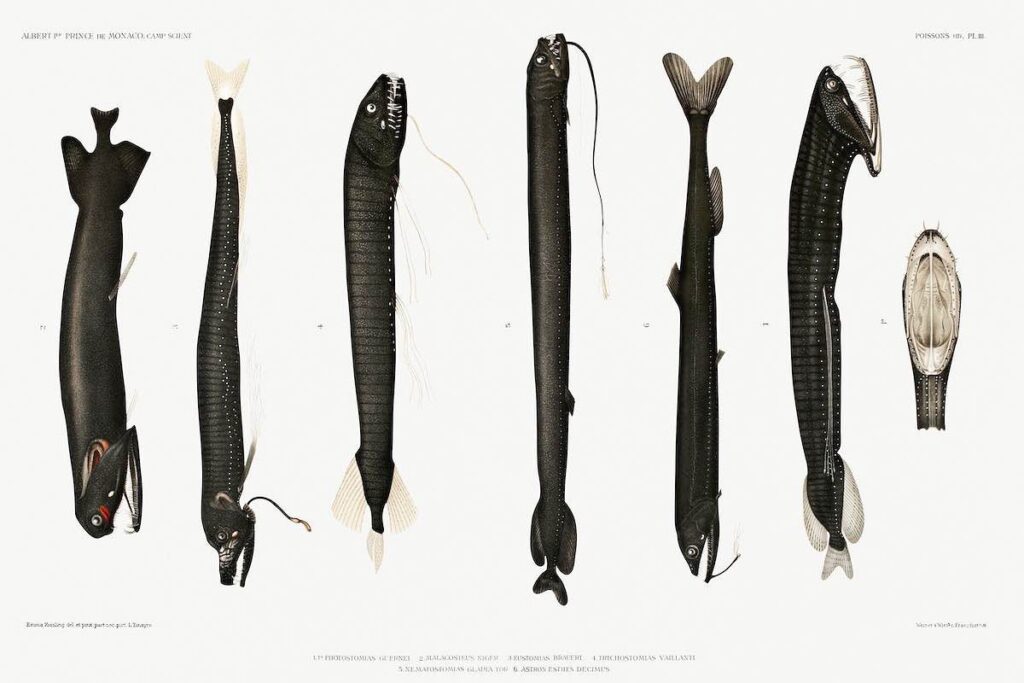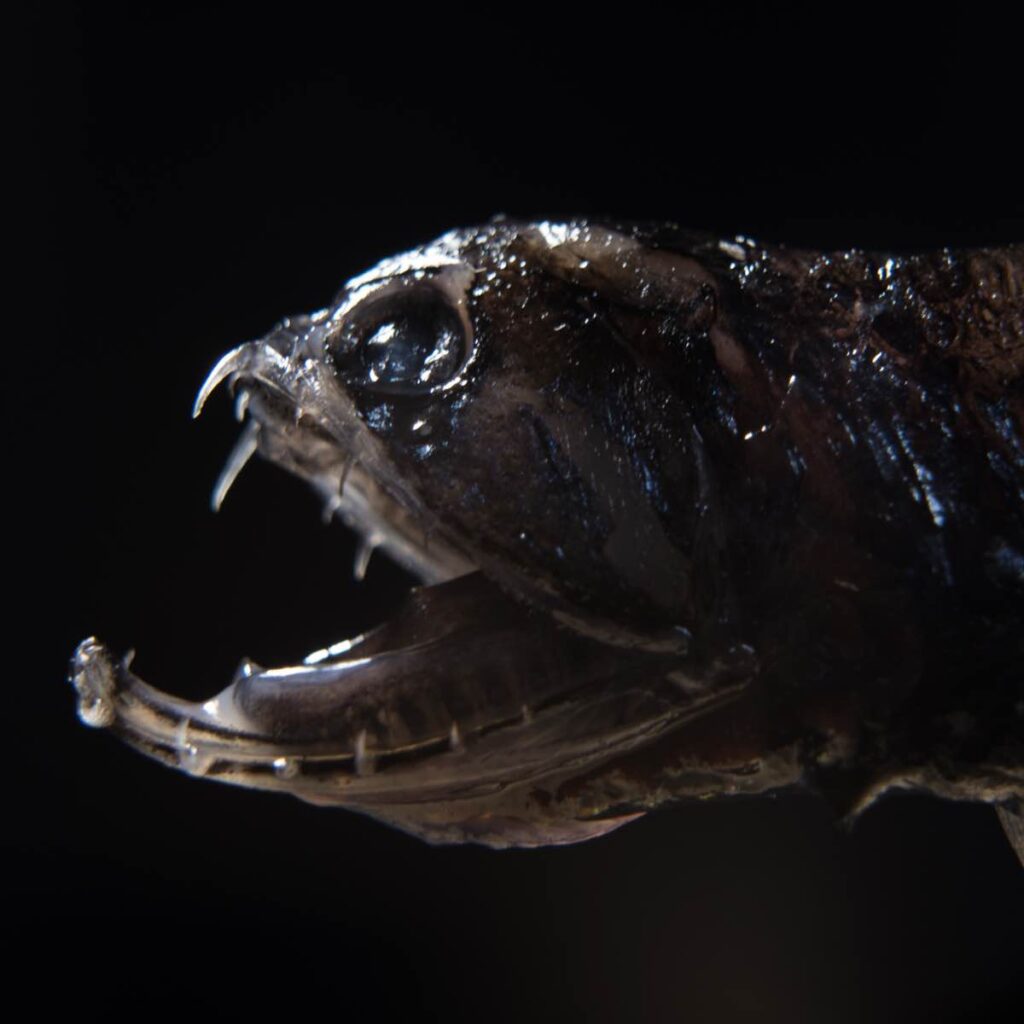Last Reviewed and Updated on February 20, 2023
Do you know what makes the dragonfish (Barbeled Dragonfishes), the mysterious and fascinating creatures that live in the depths of the ocean, unique? They exhibit something not seen in other fish. We’ll be diving into the depths to learn more about these creatures, from the basics to interesting facts about dragonfish.
About Dragonfish
Barbeled dragonfishes, also known as dragonfish, are a family of deep-sea fish that belong to the Stomiidae family. They are found in oceans around the world.
These are usually small fish that have long, slender bodies, which usually range from 6 inches to 10 inches / 15 to 25 centimeters in length, and their distinctive barbel-like structures, which are used to help them navigate and locate prey in the dark depths of the ocean. They also have large heads and fang-like teeth that are transparent.
Interesting Facts About Dragonfish

Also read: fun facts about fish
1. They make their own light
Dragonfish, like many deep sea creatures, are bioluminescent. They produce their own light through a process known as bioluminescence. They have a special organ, a photophore, located at the tip of a long stringlike structure (barbel) attached to the skin on their chin. This special organ produces light.
In addition to that, they also have photospores, cells producing light, along the sides of their body.
2. Barbel dragonfish wave their barbel back and forth to attract prey
As they move their barbel back and forth, they produce flashing light that attracts their prey. They also attract potential mates this way.
3. Dragonfish are apex predators
This fish is at the top of the food chain in its home range.
4. Some dragonfish can see their own light
Most bioluminescent fish don’t see their own light, and their light is used primarily to attract other fish to them. Black dragonfish, as well as some others, can see the light it produces, so they can use their light to actively hunt for prey.
5. Eyes of the black dragonfish larvae dangle out of their bodies
The eyes of the black dragonfish in the larval stage appear as long stalks that dangle out of the body, and they retreat as the fish ages.
Not much is known about the reproduction of many other species of barbeled fish, so this might occur with other species as well.
6. The black dragon fish mostly feeds on zooplankton
The diet of dragonfish, in general, isn’t well-researched. While the structure and looks of their jaws would suggest the black dragonfish prey on large animals, research suggests they mostly feed on zooplankton, specifically copepods (Trophic ecology of the deep-sea fish Malacosteus niger (Pisces: Stomiidae): An enigmatic feeding ecology to facilitate a unique visual system? by T.T. Sutton).
7. Some dragonfish have red bioluminescence
The ability to produce red bioluminescence is rare as it is currently only found in three deep-sea animals, and all of them are barbeled fishes. They are the black dragon fish, the Aristostomias, and the Pachystomias.
8. There are more fish with the common name dragonfish
Some species of sea moths are also commonly called dragonfish. Another fish that is commonly called the dragon fish is the violet goby.

